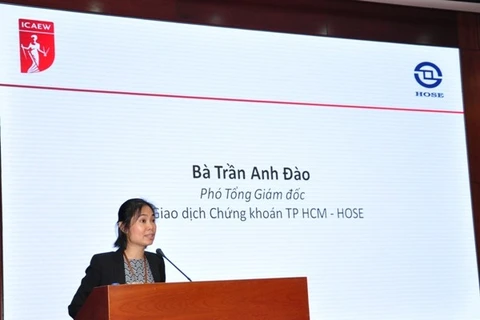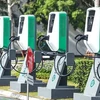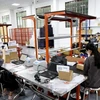HCM City (VNA) – Firms listed on Vietnam's two stock exchanges in HCM City and Hanoi will be the first to be required to adopt international financial reporting standards in 2020, a finance ministry official has said.
Trinh Duc Vinh, Deputy Director of the Accounting and Auditing Policies Department, told a seminar held on June 16 by the HCM Stock Exchange and the Institute of Chartered Accountants in England and Wales (ICAEW) that the application of the international system is inevitable due to demands from the World Bank, IFC and foreign investors, among others.
The adoption would help improve the transparency of corporate financial reporting and, thus, foreign investment, he said.
"Listed and public firms will be the first to be compelled to adopt, expectedly in 2020, but we encourage all businesses that have sufficient conditions and want to do that."
By 2018 Vietnam should have the required legal framework for applying international financial reporting standards (IFRS), he said.
Businesses should put in place accounting-auditing human resources, a decisive factor in successfully adopting IFRS, he said.
Eddy James, technical manager of ICAEW Financial Reporting Faculty, shared with participants the lessons learnt in the EU in the last 10 years.
Evidence showed that the switch to IFRS fetched Europe important economic benefits, with long-term benefits outweighing short-term costs and implementation challenges, he said.
The benefits include transparency, accounting quality, comparability, market liquidity amongst others, he said.
Local variants of IFRS should be kept to a minimum as the full benefits of IRFS adoption can only be reaped if the standards are adopted in full and amendments to or carve outs from IFRS should be avoided, he said.
Sometimes, complexity is unavoidable due to relentless growth in the length and complexity of financial statements as modern business is complex, he admitted. Strong national enforcement is critical, he warned.
According to Tran Anh Dao, HOSE Deputy Director, only a few listed banks and major institutions that have international customers have adopted IRFS so far.-VNA






















